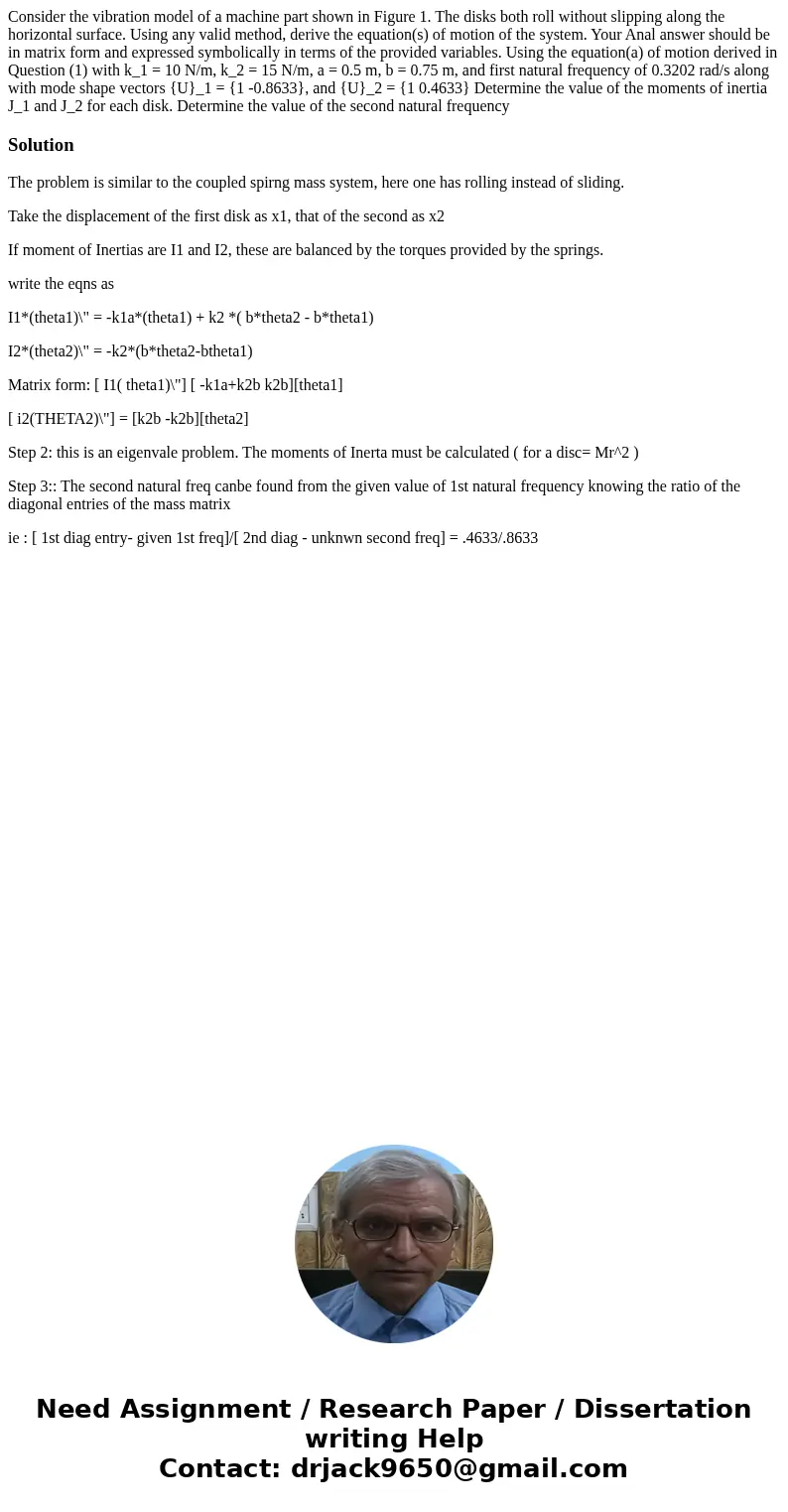Consider the vibration model of a machine part shown in Figu
Solution
The problem is similar to the coupled spirng mass system, here one has rolling instead of sliding.
Take the displacement of the first disk as x1, that of the second as x2
If moment of Inertias are I1 and I2, these are balanced by the torques provided by the springs.
write the eqns as
I1*(theta1)\" = -k1a*(theta1) + k2 *( b*theta2 - b*theta1)
I2*(theta2)\" = -k2*(b*theta2-btheta1)
Matrix form: [ I1( theta1)\"] [ -k1a+k2b k2b][theta1]
[ i2(THETA2)\"] = [k2b -k2b][theta2]
Step 2: this is an eigenvale problem. The moments of Inerta must be calculated ( for a disc= Mr^2 )
Step 3:: The second natural freq canbe found from the given value of 1st natural frequency knowing the ratio of the diagonal entries of the mass matrix
ie : [ 1st diag entry- given 1st freq]/[ 2nd diag - unknwn second freq] = .4633/.8633

 Homework Sourse
Homework Sourse